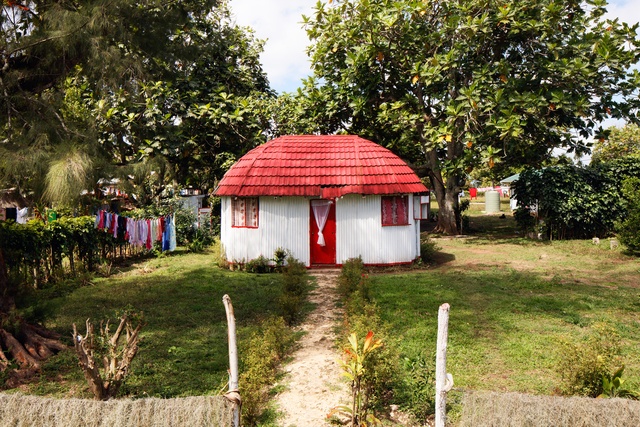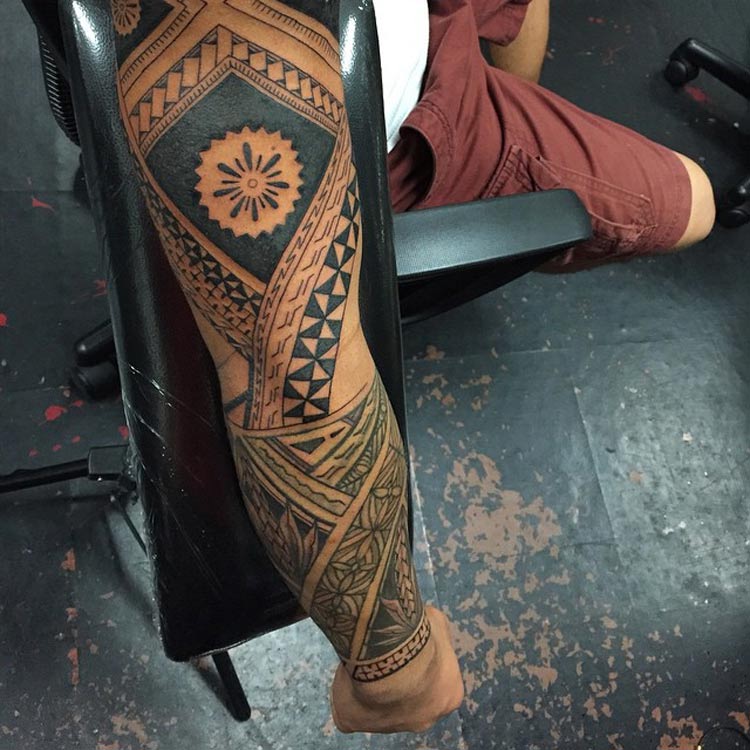One style of Tongan architecture is well known. A type of building style called the fale consists of a curved roof sitting on top of wooden pillars, using woven screens as walls. If there is a particularly bad storm bearing down on them that threatens the integrity of the walls, they’ll simply cut the wooden pillars down so that the roof is laying on the ground. The curvature of the roof allows the wind to flow over it easier. They've updated some of their building materials over the decades, though. There are also stone monuments and tombs that are found throughout the islands as well.
Like other South Pacific countries, tattooing is a common part of their culture. Some of these can be fairly elaborate and generally tell a story. It was often viewed as a symbol of strength. When the missionaries arrived in Tonga, they highly discouraged it (what a buzzkill), and the practice fell to the wayside somewhat. Today, it’s common for both men and women to have some tattoos. (One day I’ll finally figure out what I want a tattoo of.)
Tonga has not had a strong written literary history, which has mostly been in the form of oral tales and stories. However, during the 1960s and 1970s, there was a general push for developing Pacific Islander literature on a broader scale. Although there are newspapers and a few magazines that are produced in the Tongan language, there are few literature publications that are produced in Tongan. English is taught in school and serves as one of the main languages of instruction and business, so most authors end up publishing their works in English for a broader audience.
 |
| Epeli Hau'ofa |
 |
| Konai Helu Thaman |
Up next: music and dance

.jpg)


No comments:
Post a Comment